|
We're getting into some of the more obscure WWI posters now! This poster is from the United States Department of Agriculture, specifically the Bureau of Biological Survey. "Feed the Birds This Winter: They will repay you by destroying thousands of insects that harm gardens, trees, and crops" is the main message of this poster. Suggesting that ordinary Americans feed birds "especially during and after storms," provide shelter, and protect feeding areas from bird predators, the poster connects "our native birds" to their insect-eating abilities. This is a very text-heavy poster, so I've transcribed it all so you can know what it says! "EVERY LOCAL BIRD you keep from starving, when cold weather, snow, and ice shut off its natural food supply, will repay you by destroying hundreds of caterpillars, grubs, borers, beetles, and insects that would prey on your flowers, vegetables, fruit, foliage, or field crops. Birds more than pay for their keep. It is better to feed birds a little now than to grow crops for insects later. "FEEDING BIRDS IN WINTER costs little in time, food, or equipment. It attracts birds all winter to flit and chirp around your dooryard. It is one of the most important means of preserving birds. An increase in the number of birds means that more of them will nest in your trees next spring and become your summer companions. They will sing their thanks and contribute to the beauty and charm of your neighborhood. "Feeding birds in winter is a delightful and inexpensive recreation as well as an excellent investment. Children particularly enjoy and benefit from this form of applied nature study." "Feed the Birds this Winter. They will repay you by destroying thousands of insects that harm gardens, trees, and crops. "How to Help Birds in Winter "1. Supply food frequently, especially during and after storms. "2. Provide feeding shelters where birds can find food and eat comfortably during sleet and storms "3. Protect feeding stations against cats which will kill or frighten the birds. "Every Destructive Insect is on the Bill of Fare of One or More of Our Native Birds. "BIRDS feed upon almost all kinds of injurious insects. They lead active lives and require much food. A single bird often eats more than 100 insects at a single meal and sometimes consumes several thousands small insects. Birds on a 200-acre farm in North Carolina destroyed a million green bugs or wheat aphids daily. There are many localities where birds have saved certain trees, garden crops, or farm fields from total destruction. "Encourage all kinds of birds, as the various species prey on different kinds of insects. For example, the hair and downy woodpeckers render a special service in the protection of trees. They glean pests from beneath the bark and from within the wood. They account early for many a scale insect, bark beetle, borer, caterpillar, and ant. The bobwhite, one of the most important of our game birds, renders particular service in cultivated fields by destroying large numbers of potato beetles, wireworms, clover weevils, bollworms, cut-worms, army worms, and other crop pests. The bobwhite suffers particularly from hard winters. A little suet or a little cracked corn and grain will keep these valuable feathered servants in your employ. "FOR bobwhites, build low hutches with roofs that will keep out snow, or make wigwam-like stacks of grain sheaves with openings below. Keep the entrances free from snow and scatter within cracked forn or small grains or seeds. Putting out food on a bare spot on the ground is an easier method, but not so useful. "For woodpeckers, place suet under wire netting on trees; pour a melted mixture of suet and grain or seed in cracks in bark or in large holes bored in thick pieces of wood accessible to the birds; or make a 2-inch hole in a coconut and fill the interior with chopped suet and nuts and suspend from a a branch. "For small birds in general, make food shelves at windows or on trees, sheltered from the wind, and with raised edges to keep food from being blown off. Better still, put the food in a hopper, which will protect the supply from the weather and let it down gradually. Small birds will feed also at the coconut larders mentioned above and upon the suet mixtures. "The Best Winter Food For Birds "Suet or other fat, pork rinds, bones with shreds of meat, cooked meats, meal worms, cut-up apples, birdseed, buckwheat, crackers, crumbs, coconut meat, cracked corn, broken dog biscuits or other bread, hemp seed, millet, nut meats of all kinds (especially peanuts), whole or rolled oats, peppers, popcorn, pumpkin or squash seeds, raw or boiled rice, sunflower seeds, and wheat. "Full information as to feeding and attracting birds and providing nest boxes, houses, and shelters for them will be furnished on receipt of a postal card addressed to U.S. DEPARTMENT OF AGRICULTURE, Bureau of Biological Survey, Washington, D.C. "Begin to Feed the Birds To-Day - The Singing Laborer is Worthy of His Hire." Much of this advice is still sound today! At the time, of course, it was marrying not only nature study for children (a VERY popular topic during the Progressive Era) but also advocating for more natural forms of pest control in a time when pesticides existed, but had limited applications, and the availability of which was likely curtailed by more important wartime manufacturing. Birds do require an incredible number of insects to survive (bats, too), and even seed and fruit-eating songbirds feed their nestlings insects to give them the protein and fat they need to grow. Today, more and more farmers are returning to birds - from raptors to songbirds - to address pest issues, from pest birds (like starlings and seagulls) and rodents to insects. In some instances, the birds outperform pesticides. And contrary to what most people put in their bird feeders, birds eat a LOT of insects. Which is why I was surprised and happy to see mealworms on the list of recommended foods for birds, alongside suet and nuts. I've been feeding the birds in winter and early spring (we take the feeders down in the summer) to support the population, but also to let up a little on the insect population. Unlike 100 years ago, we're currently facing an insect apocalypse, which could have huge repercussions across the planet, including, but not limited to, agriculture, as many of our favorite crops rely heavily on pollination from wild insects. Which is why, even though I'm not a farmer and we're not at war, I still feed the birds in the winter. You can see my setup in the photo above - I have several squirrel-proof feeders (determined squirrels can get by even the baffles, but they provide shelter for the birds during the rain) with different mixes. One is a fruit, nut, and shelled sunflower seed mix with mealworms. Two more are just straight black oil sunflower seed. One has suet, and another feeder, which we're trying new this year, is just straight mealworms and beetles. Sadly, that one has been less popular. Maybe those insects don't have enough fat in them. Our half-dead holly tree provides enough spreading branches for the feeders but also cover from predators like hawks. Birds like to have cover they can escape to when predators come calling. And yes, that includes cats! Outdoor and feral cats are the number one predator of songbirds in suburban and urban areas. So keep your kitties inside or build them a catio. If they knew it in WWI, we should know it now. It is most important to support native birds, and not pest birds like starlings (who, while fascinating, are native to Europe and can out-compete native birds), so keep your food focused on native seeds, fruits, and nuts whenever possible. Just watch out for inexpensive fillers that aren't eaten by most songbirds. Sunflower seeds, peanuts, pecans, walnuts, raisins, blueberries, and cracked corn are all great. Suet (raw or rendered beef fat) is also good, as is natural peanut butter (avoid the hydrogenated kind, the kind with palm oil, and sugar), for providing the fat needed to keep birds warm and well-fed during the coldest winter months. I have set up our bird feeders right outside the kitchen window, and like Progressive Era nature study enthusiasts knew, they do provide a great deal of joy. I love coming to the kitchen every morning and checking to see what birds are at the feeders, and which ones need refilling. Since it has been incredibly cold and icy here in the Hudson Valley of New York this winter, our feeders have been almost as busy as Grand Central! We've seen cardinals, blue jays, tufted titmice (my favorites!), nuthatches, chickadees, sparrows, purple house finches, gold finches (they're mostly brown in the winter), downy woodpeckers, red breasted woodpeckers (whose breasts are actually just pink - it's the heads that are red!), dark-eyed juncos, mourning doves, and yes, even the occasional starling. More rarely we've seen cedar waxwings, rose-breasted grosbeaks (another favorite!), phoebes, and even the rare overwintering bluebird (though not actually on the feeders). Another way to support native birds (and insects!) is to plant native plants, especially fruit-producing shrubs for birds. For insects, native trees, especially oaks, can host up to 400 species of insects, including moths and butterflies. Okay, I'll get off my soapbox now! But always nice to see good sense from a century ago still holding true today. Do you feed the birds? Have a favorite winter visitor? Tell us in the comments! The Food Historian blog is supported by patrons on Patreon! Patrons help keep blog posts like this one free and available to the public. Join us for awesome members-only content like free digitized cookbooks from my personal collection, e-newsletter, and even snail mail from time to time! Don't like Patreon? Just leave a tip!
0 Comments
Meatless Monday: Brunch with Rosemary & Sage Roasted Potatoes and Gorgonzola Garlic Cream Sauce2/7/2022 It's been so bitterly cold lately, I thought I would finally share this stunner of a vegetarian brunch with everyone. A few weeks ago we had a friend over for brunch. It had been a long couple of post-holiday weeks, and everyone was playing catchup at work. So I thought having something delicious and comforting for brunch would help take the edge off. A favorite local Italian restaurant of ours has an appetizer I adore - waffle fries fried with sage and rosemary with a side of gorgonzola cream sauce for dipping. It's divine. I wanted to replicate something similar at home, but brunchified, and with a little lighter hand. So I decided to roast some red potatoes with sage and rosemary and olive oil. I had intended to pick out the herbs as I'm generally not a fan of whole rosemary leaves, but everything fried up in the olive oil so beautifully that we devoured the herbs alongside the potatoes. I topped the potatoes with a fried egg, to make things feel more breakfast-y, with a side of broiled grapefruit for a vintage feel and to cut the fat a little. Sadly I used brown sugar, so instead of caramelizing it just melted everywhere. Still tasted yummy though. We had faux mimosas (the friend doesn't drink alcohol) which were also delicious. The star of the show, though, was the potatoes and cream sauce. Divine. Rosemary & Sage Roasted PotatoesI used a fancy flake salt flavored with wild garlic, so if you're using regular sea salt, maybe add just a dash of garlic powder or some minced garlic. 6-8 medium red potatoes 1 container/bunch fresh sage 1 container/bunch fresh rosemary olive oil coarse sea salt Preheat oven to 450 F. Scrub the potatoes, cut off any eyes or bad parts, and cut into similarly-sized cubes. Wash the herbs and strip the leaves off of the rosemary stems. Pop the sage leaves off of their longer stems. On a large half sheet pan, spread the potatoes, and drizzle with olive oil. Add the herbs and using your hands, gently toss everything to combine (you can do this in a bowl if it's easier) and spread out in one layer, making sure the potatoes all have a cut end facing down. Sprinkle with salt and put in the oven. Roast for 20-30 minutes, or until potatoes are perfectly tender, with crisp brown bottoms. When ready to serve, use a very flat spatula to scrape up the crispy bits and put the whole shebang, potatoes, herbs, and all, into a serving dish. Garlicky Gorgonzola Cream SauceOne of the miracles of heavy cream is that if you reduce it, it turns into this silky sauce with no need for a roux in sight. 1 pint heavy cream (use more if you like!) 2 cloves garlic 1+ cup crumbled gorgonzola salt & pepper to taste With the flat side of a knife slightly crush your peeled garlic cloves, and add them to the heavy cream in a heavy-bottomed saucepan and cook over medium heat. Let the cream simmer, but do not boil, until reduced slightly (it should coat a spoon) and fragrant with garlic. Fish out the garlic cloves and discard. Add the gorgonzola and stir to melt. Give it a taste and add salt and pepper as needed. Keep hot until ready to use. To make brunch, pile some potatoes on a plate, add a ladle of gorgonzola sauce, and top with a fried egg. If you're like me (over medium, please!), you like to break the runny yolk. Virgin MimosasIf you're entertaining folks for brunch who don't want or can't have alcohol, virgin mimosas are delightful. We had sparkling cider from New Year's Eve that had gone un-opened, but you could just as easily use ginger ale or 7-up instead. 1 part sparkling cider 1 part high-quality orange juice champagne flutes Are they really mimosas without the champagne flutes? Pour half and half into each flute, and don't worry about drinking too many. Broiled GrapefruitDo as I say, not as I did. Brown sugar does not work. Lesson learned! 1/2 fresh grapefruit per person 1 tablespoon granulated white sugar per half grapefruit Set the broiler to high. Cut grapefruit in half and place on a metal sheet pan or other broiler-safe dish (do not use glass baking dishes under the broiler!). Gently smooth the tablespoon of sugar over the top. Place under the broiler and cook 1-2 minutes (watch them!) until the sugar is caramelized. Serve with grapefruit spoons, if you have them. Otherwise a dessert spoon or butter knife works, too. In the bleak midwinter, a sunny brunch can really lift the spirits. But don't skimp on the trappings. Light some taper candles. Pull out the champagne flutes and an ice bucket. Dig out the grapefruit spoons (I don't have any yet!). It can really make the difference. Don't have any of that? Make a list and keep your eyes peeled once you feel it's safe to go antiquing again. Fancy glassware can usually be had for a song at thrift shops, and since glass is inert, a quick wash in hot soapy water and it will be fit for use, no matter what shape it was in when you got it (so long as it's not broken or cracked!). Have you been doing anything special lately to make winter seem less dreary? The Food Historian blog is supported by patrons on Patreon! Patrons help keep blog posts like this one free and available to the public. Join us for awesome members-only content like free digitized cookbooks from my personal collection, e-newsletter, and even snail mail from time to time! Don't like Patreon? Just leave a tip! It's the depths of January. And after months of holiday eating, life can feel depressingly uninspiring when it comes to food. But while the imported tropical fruits beckon, it is possible to make a perfectly delightful dinner out of foods that are (mostly) in season here in the northeast. Enter the butternut squash. I'm typically not a huge fan. Butternut squash soup is usually much too sweet. Mashed squash is insipid and mealy. But when a Patreon patron posted about making Emily Nunn's delicata squash salad with parsley and walnut vinaigrette and raved about it, I was intrigued. I didn't have delicata squash, just one lonely little butternut left over from my impulse buy Thanksgiving CSA haul. I did have a big bunch of parsley, but I think it got a little frosty in the frigid temperatures we've been having lately, so bits were crispy and wilted. It would take some sorting. I also had a bottle of walnut oil I'd bought last year, and mostly hadn't used, which was set to expire in February. In the fridge, half a block of the most deliciously creamy, salty, made-in-New-York cow's milk feta (the sheep's kind and I don't get along) was languishing. Inspiration was striking. I'm an inveterate tinkerer when it comes to cooking. Even the respected science of baking usually has me asking, can I put fruit in this? Can I substitute some whole grain flour? Do I really have to beat the eggs for three whole minutes? Even as I don't mess with the ratios otherwise. So it's no surprise that I would be clinically unable to replicate Emily's recipe as she wrote it. The bones were good, though, so I stuck to those. Here's what I came up with: Roasted Squash & Walnut SaladThis recipe seems complicated, but once the vegetables are cut and in the oven, it's a fair amount of waiting. You can do a pan of dishes or start a load of laundry or watch most of an episode of your favorite television show while you wait. 1 smallish butternut squash 2 smallish yellow storage onions walnut oil pink salt garlic powder black pepper dried sage walnuts feta (the good-quality, locally made wet kind) fresh flat leaf parsley fresh baby spinach balsamic vinegar Dijon mustard maple syrup Preheat the oven to 400 F. Generously coat a half sheet pan with walnut oil (you can use olive or canola, if you prefer). Wash butternut squash and cut neck into one inch rounds. Cut in half and with a sharp knife remove the peel. I left the bulb end, cut it in half, scooped out the seeds, and roasted the halves whole with the rounds. Flip the half moons of squash in the oil so they're well-coated. Peel and halve the onions, cut into rounds, and add to the oiled pan. Combine about 2 tablespoons of pink salt, at least a teaspoon of black pepper, a few shakes of garlic powder and dried sage, and sprinkle the mixture all over the squash and onions. Roast for 30 minutes, flip, season again if you like, and roast for another 10 minutes or so, until the squash is crispy on one side and very tender, and the onions are tender. Scatter a generous handful of walnuts across the pan and roast another 3-5 minutes, until the walnuts are fragrant. Meanwhile, assemble your plate with the baby spinach topped with just the whole leaves of washed and dried parsley. Make a vinaigrette of about 3 tablespoons walnut oil, 2-3 tablespoons balsamic vinegar, and 1 tablespoon each Dijon mustard and maple syrup (add more syrup or a tablespoon of water if it seems too sharp). Top the greens with slices of squash, onions, and walnuts, drizzle over the vinaigrette, crumble feta on top, and serve while the vegetables are still warm. This salad is divine. The butternut squash came out silky and rich, the onions soft and not-too-sweet, the walnuts pleasantly crunchy, the parsley added some fresh, grassy tones to the milder spinach, and the sweet-sharp balsamic vinaigrette tied everything together. There was one slice of butternut squash left on the pan, so I tried it with some of the leftover onions and walnuts (which I stuffed in the cavities of the squash halves with the rest of the vinaigrette, for lunch tomorrow). To be honest, the squash was so good I could have eaten it just like that. But it really added so much satisfying heft to the salad. I don't think I'll ever make butternut squash any other way again. It was too delicious this way, and I could see it being the star of any number of other salads as well. It's hard to find satisfying, fresh recipes for winter eating that don't involve ingredients flown in from thousands of miles away. And while I love the wintertime treat of beautiful citrus, it's nice to be able to make something so delicious out of locally grown storage foods, too. I hope you enjoy this recipe as much as I did! The Food Historian blog is supported by patrons on Patreon! Patrons help keep blog posts like this one free and available to the public. Join us for awesome members-only content like free digitized cookbooks from my personal collection, e-newsletter, and even snail mail from time to time! Don't like Patreon? Leave a tip! |
AuthorSarah Wassberg Johnson has an MA in Public History from the University at Albany and studies early 20th century food history. Archives
July 2024
Categories
All
|
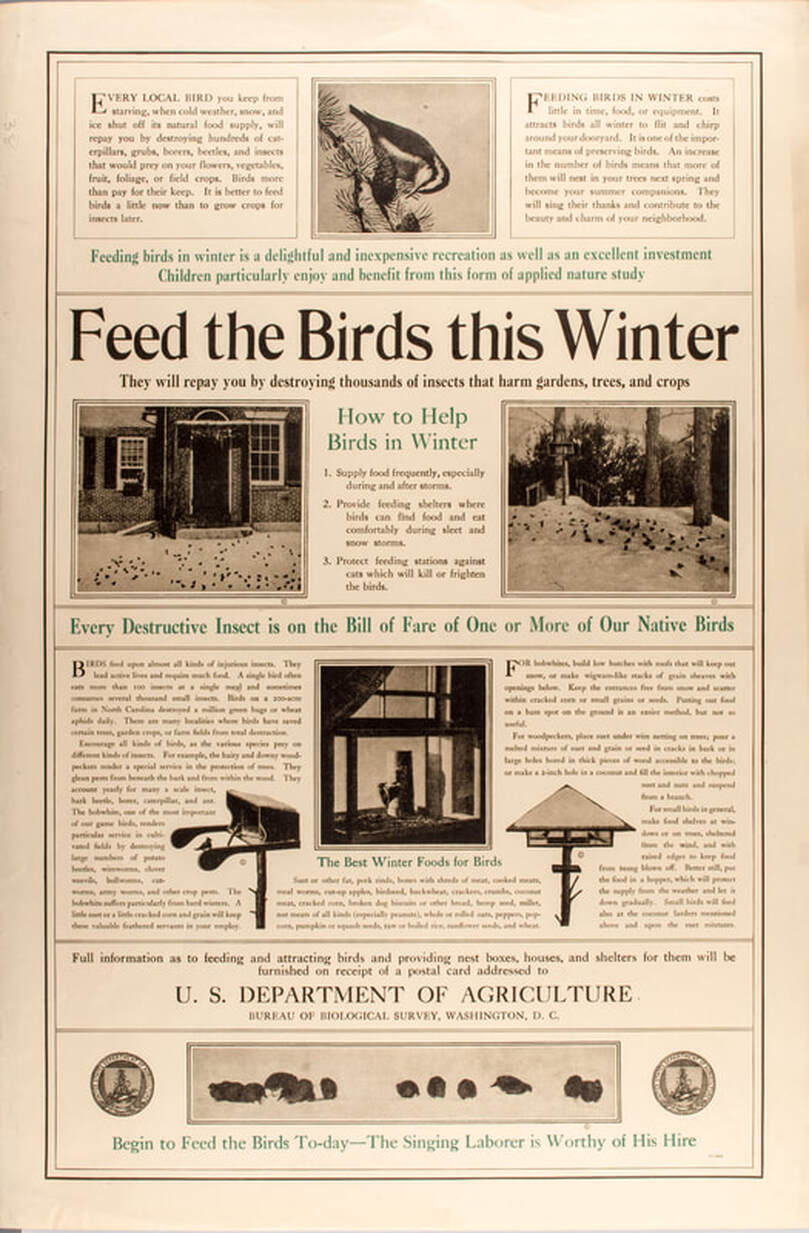
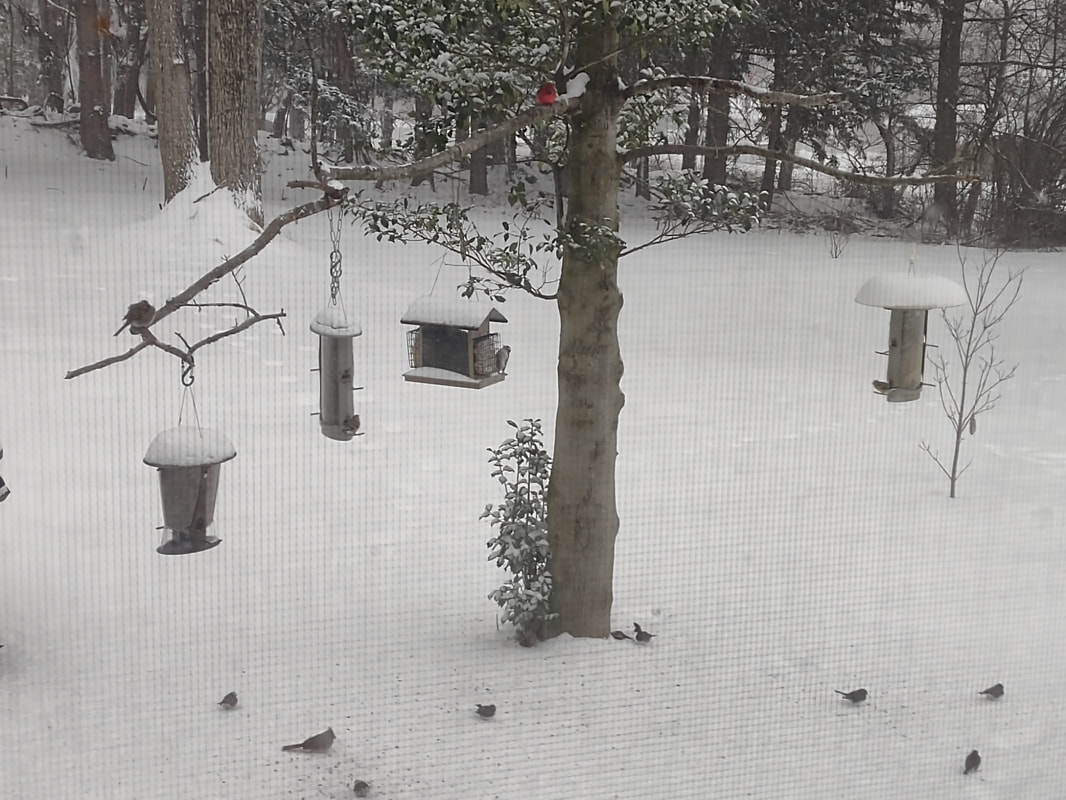
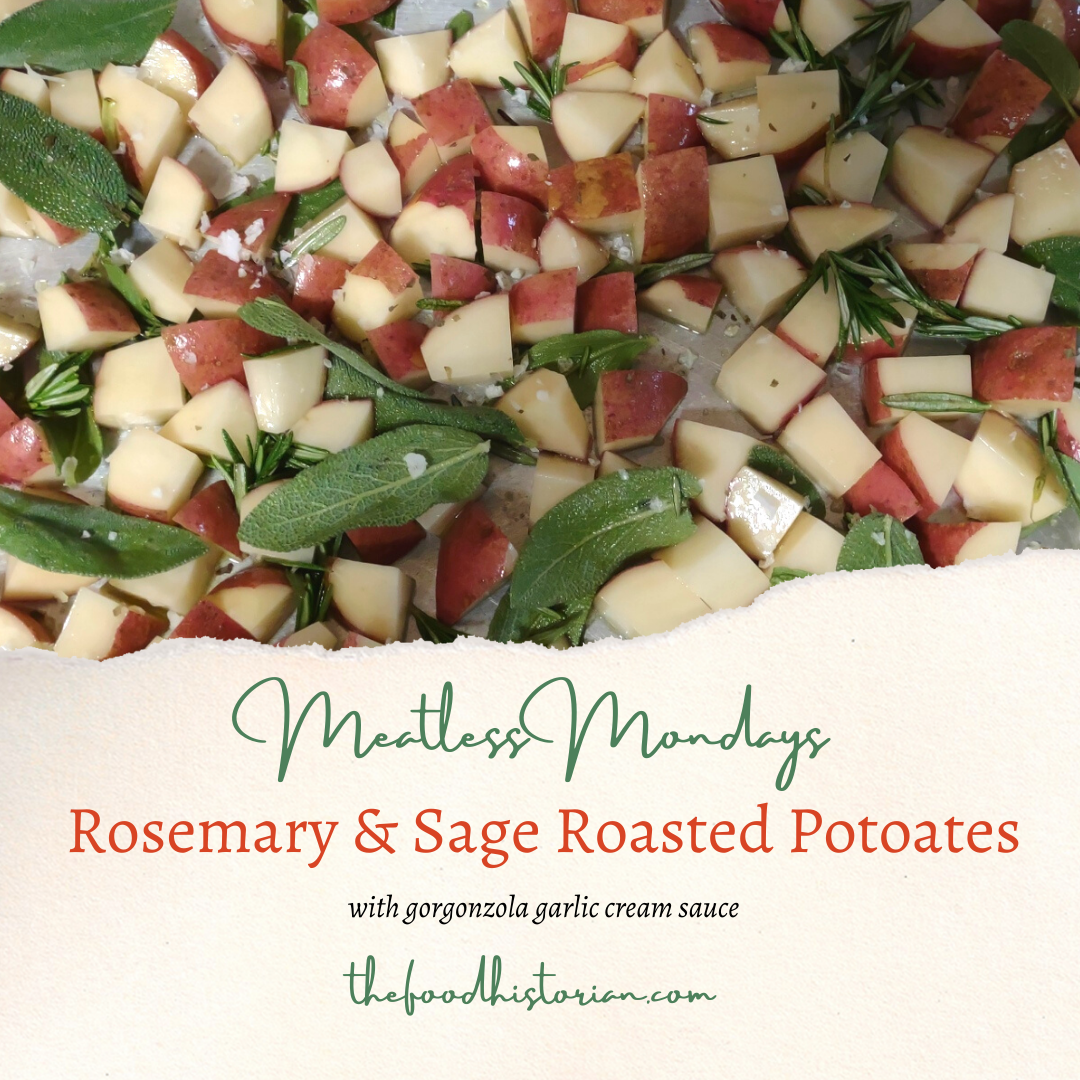
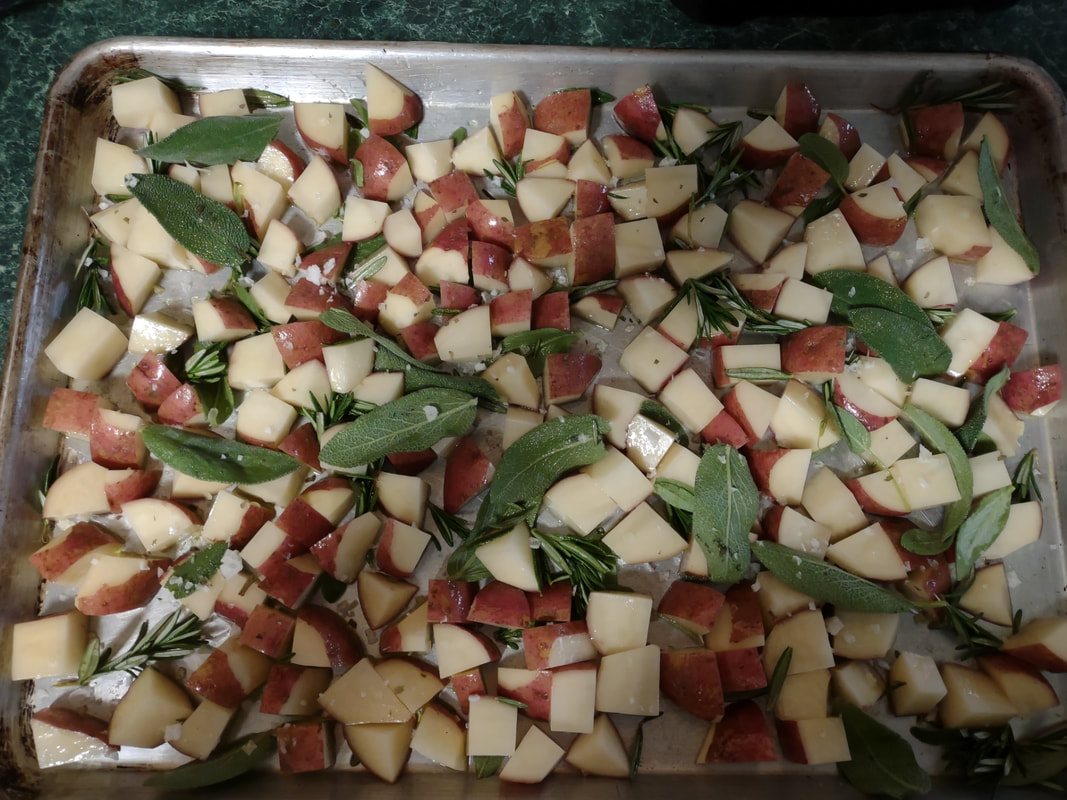
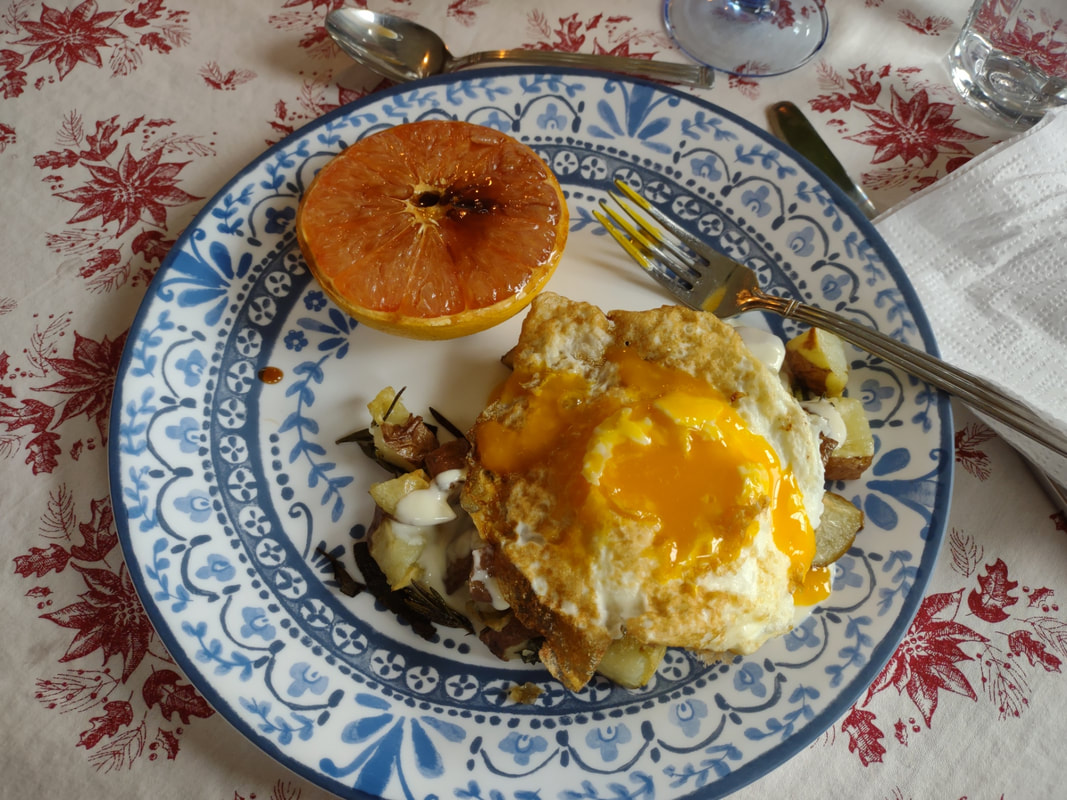
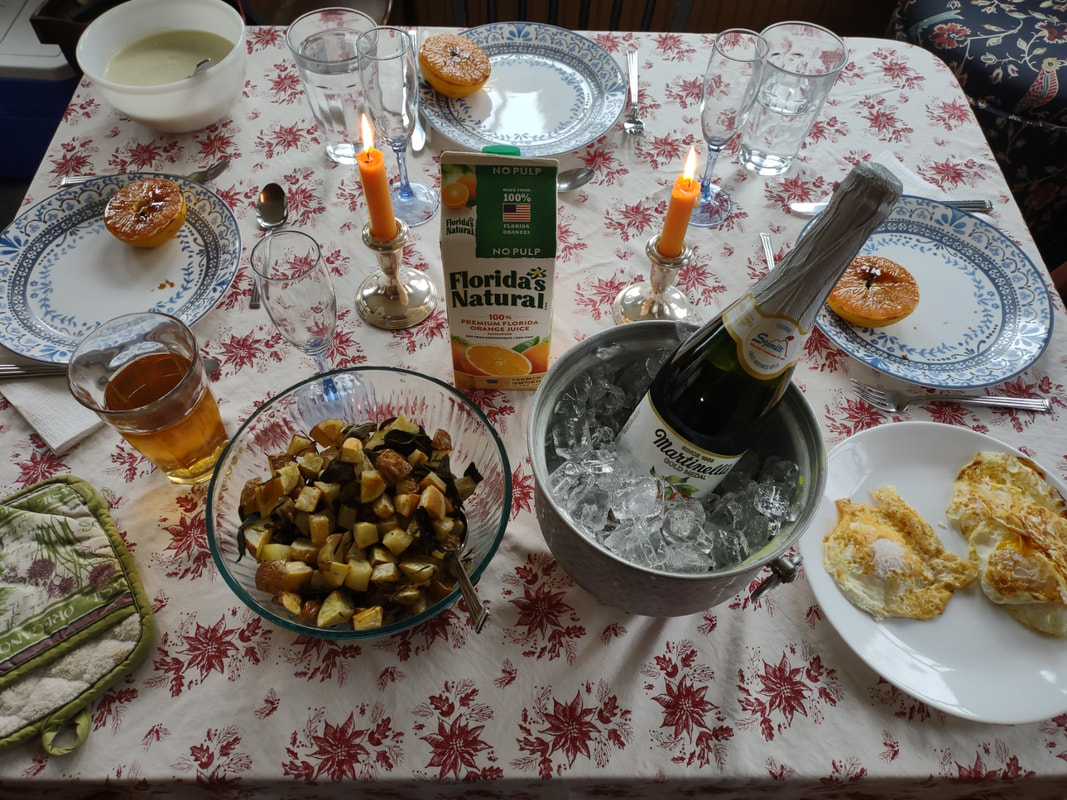
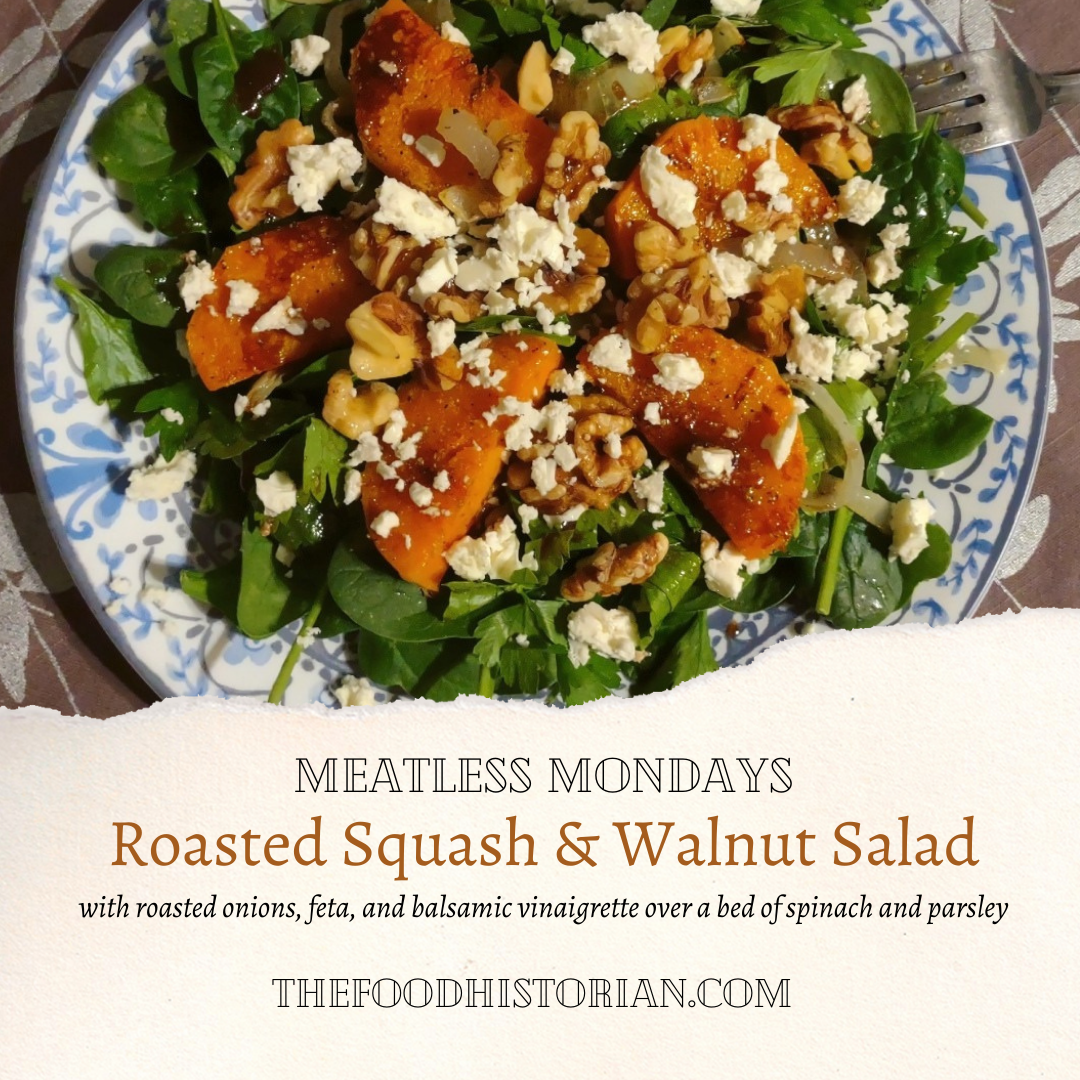
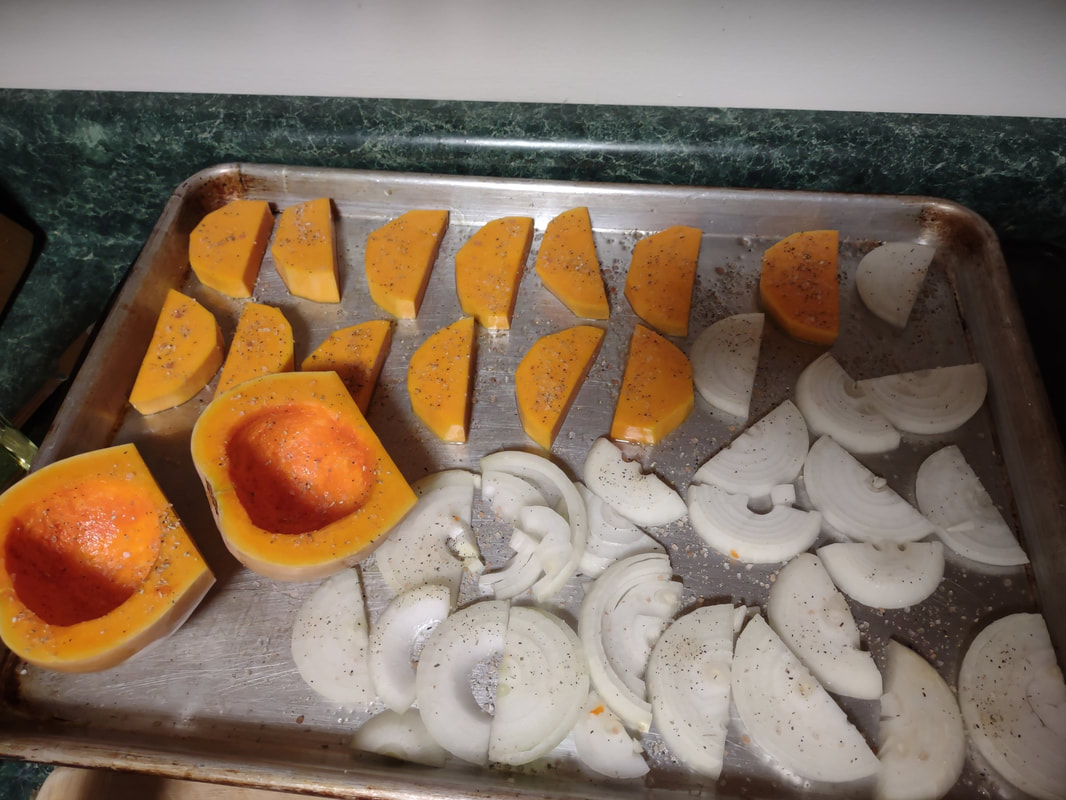
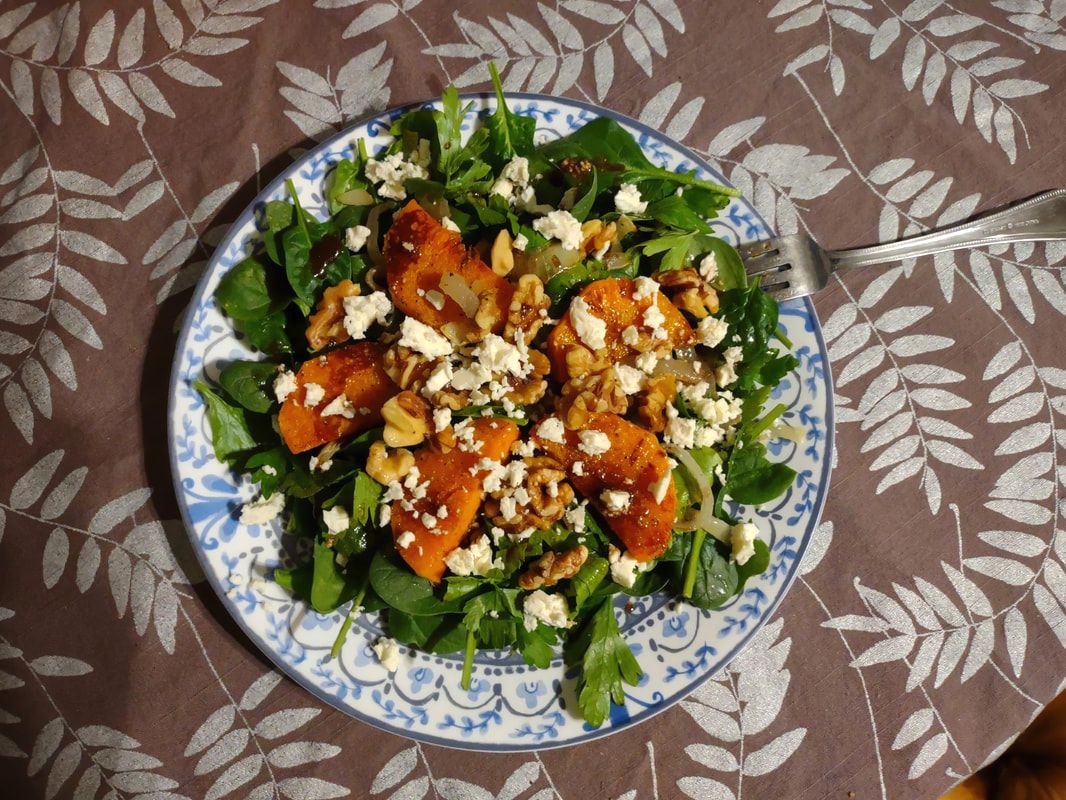

 RSS Feed
RSS Feed